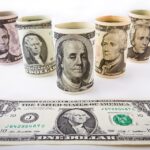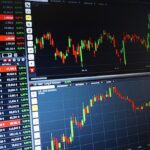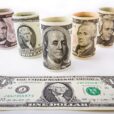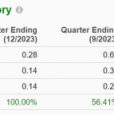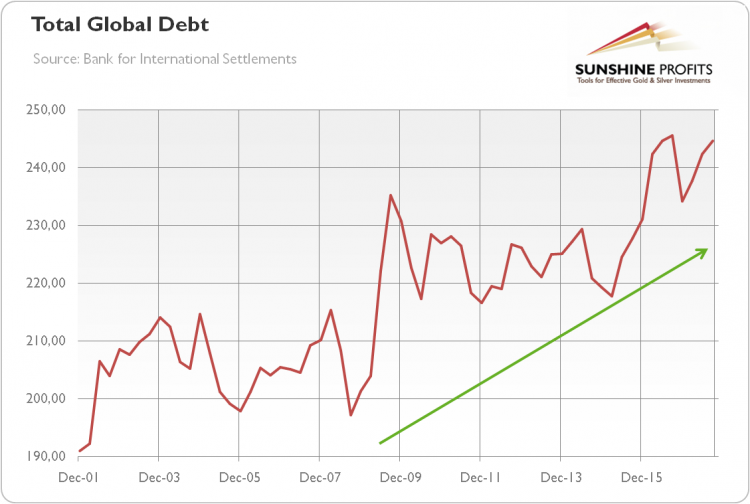
This month, we will adopt a more global perspective. Until recently, thanks to the synchronized worldwide growth, it was easy to lose sight of the elephant in the room. But as U.S. interest rates have climbed in recent months and dollar has appreciated, we cannot ignore the debt threat any longer.
Indeed, the elephant is doing well. It is well-nourished and constantly growing. As the chart below shows, total non-financial debt has risen from 191 percent of global GDP at the end of 2001 to 210 percent before the financial crisis and to 245 percent today (the most recent data are for the end of September 2017).
Chart 1: Credit to the non-financial sector from all sectors at market value as % of GDP from 1990 to 2017.
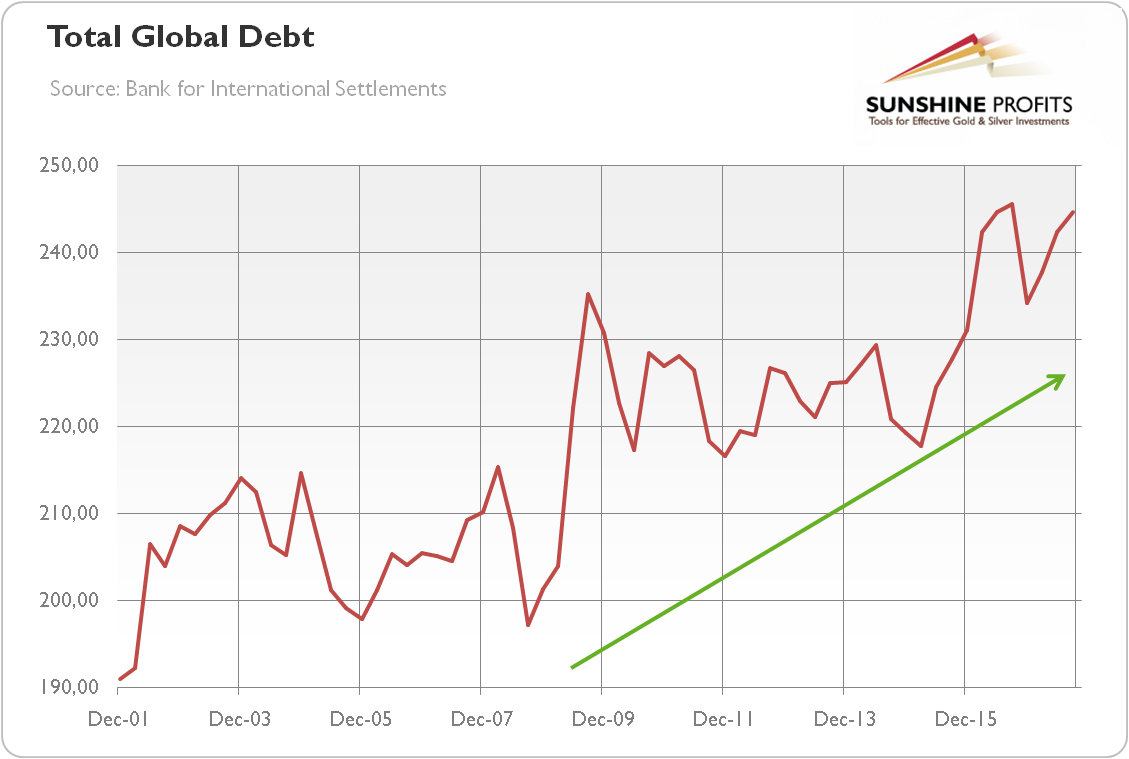
So much for deleveraging. Or actually, there was a deleveraging. When you decompose the total debt, you will see that households have reduced their debt burden after the Great Recession (although it bottomed in March 2015). What happened was the increase in corporate indebtedness and even higher spike in the governments’ obligations, as one can see in the chart below.
Chart 2: Credit to general government (blue line), to households (green line) and to non-financial corporations (red line) as % of GDP from the end of March 2008 to the end of September 2017.
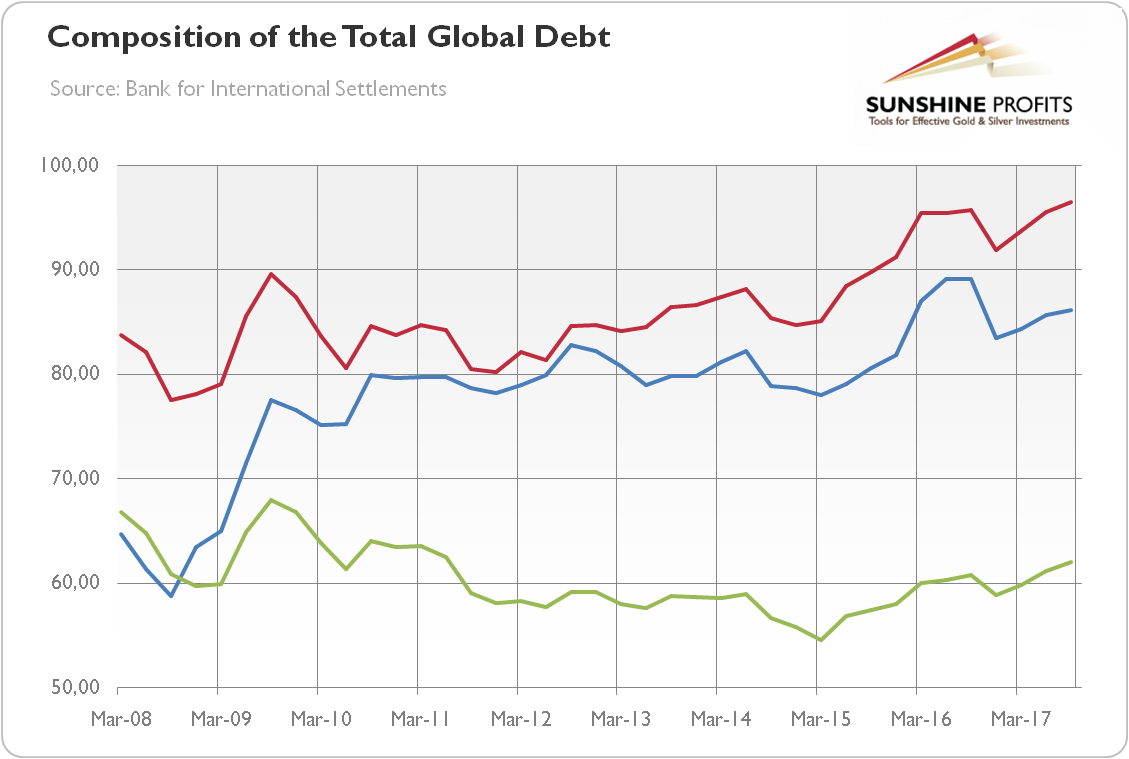
And that trend is set to continue, as populist agenda has been absorbed into mainstream politics. All you need is to look around, the post-recession austerity is dead. Although the macroeconomic conditions seem to call for budgetary prudence and fiscal tightening, the politicians loosen fiscal policy. The best example is the U.S. public debt, which is likely to reach about 108 percent of the GDP this year, despite the growth pickup. Not to mention Japan, where the debt-to-GDP ratio is above unbelievable 250 percent.
Everyone who endured the economic crises knows that high debts create serious risks, as credit-fueled booms are clearly not sustainable in the long-run. Hence, if policymakers do not make fiscal consolidation and do not implement structural reforms, something bad may happen when the good times pass away. The wolf does not need much to blow down pigs’ houses made of straw and sticks. Just one puff. It’s not hard to imagine an external negative shock to the global economy in our times. Just one tweet. And the house collapses and the wolf comes in. Gold should shine then.



